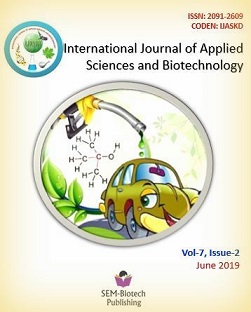Benefit Cost Analysis of Different Rice Varieties in Kapilvastu District, Nepal
DOI:
https://doi.org/10.3126/ijasbt.v7i2.24210Keywords:
Rice, Production, Benefit Cost ratioAbstract
Rice is an annual plant belongs to family Poaceae. It is the major staple food crop of Nepal and can be grown from plain to mountainous regions of Nepal. The crop varieties differ from each other in terms of production cost, gross return and gross margin. The objective of this study was to analyze benefit cost ratio for production of different rice varieties. The study was carried out in Kapilvastu district of Nepal in 2018. A sample size of 120 respondents were selected randomly. Four different rice varieties: Gorakhnath, Radha-4, Ramdhan, and Sawa were used for the study. The primary data were collected through household survey using interview schedule. The data were analyzed using Statistical Package for Social Sciences and Microsoft Excel. The average cost of production was amounted to NRs. 77,100/ha for all four rice varieties. Sawa variety had the highest gross return (NRs. 1,01,212.5/ha). The benefit cost ratio was observed highest for Sawa (1.312) and lowest for Radha-4 variety (1.005). Sawa is the most economic rice variety in terms of gross and net production in the study area. The findings will help farmers to choose and cultivate rice variety with greater profitability. It is recommended that concerned authorities should give emphasis on subsidies, farmers training and ensuring floor price of rice.
Int. J. Appl. Sci. Biotechnol. Vol 7(2): 222-226




